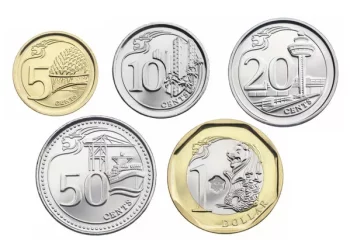The Australian Dollar (AUD) continues to face headwinds against the US Dollar (USD) on Friday, trading at around 0.6360. The ongoing tariff threats from the Trump administration, particularly speculations about a potential 10% tariff on Chinese goods, are weighing on the AUD, given China’s status as Australia’s largest trading partner. This development is further compounded by a stronger USD, bolstered by recent US inflation data.
The AUD found some support from domestic employment figures, which showed a mixed picture. Australia’s seasonally adjusted Employment Change rose by 35,600 in November, bringing the total number of employed people to 14.5 million. Additionally, the Unemployment Rate dropped to 3.9%, its lowest since March, beating market expectations of 4.2%.
However, the stronger US Dollar remains the dominant force, fueled by the release of the hotter-than-expected US Producer Price Index (PPI) on Thursday. The US PPI jumped by 0.4% month-over-month in November, marking the largest gain since June and surpassing the expected 0.2% rise. This data points to persistent inflationary pressures in the US economy, reinforcing expectations for a cautious Federal Reserve (Fed) stance moving forward.
Market attention now shifts to the US Federal Reserve’s interest rate decision next week, with traders fully pricing in a 25 basis point rate cut on December 18, according to the CME FedWatch Tool. The Fed’s stance will be crucial for determining the direction of the USD in the coming weeks.
Tariff Concerns Weigh on AUD Amid US-China Tensions
The AUD also faces pressure from the broader trade tensions between the US and China. Beijing has responded to US sanctions with retaliatory measures, including launching an investigation into US tech companies and tightening the supply of critical minerals. These developments are expected to have a ripple effect on the Australian economy, given its close trade ties with China.
China’s recent trade data revealed a slight slowdown in export growth, with exports rising 1.5% in November, down from 11.2% in October. Despite these challenges, Chinese President Xi Jinping reaffirmed confidence in the country’s economic target, but also warned of the broader consequences of tariff and trade wars, suggesting that no one would emerge as a winner from such conflicts.
Monetary Policy Divergence and Slower Growth in Australia
In Australia, the Reserve Bank of Australia (RBA) kept the official cash rate unchanged at 4.35% during its December meeting, citing ongoing inflation risks and the need for careful monitoring of economic data. This comes as Australia’s GDP growth has slowed to its weakest pace since the pandemic, with the third-quarter GDP increasing by just 0.3%, below market expectations of 0.4%. This weaker-than-expected growth has led markets to price in a 96% chance of a rate cut by April 2024.
Technical Outlook: AUD/USD Faces Downward Bias
Technically, the AUD/USD pair remains under pressure, hovering near its yearly low of 0.6348, seen on August 5. The daily chart reveals a strengthening bearish trend, with the pair moving downward within a descending channel pattern. The 14-day Relative Strength Index (RSI) remains slightly above 30, indicating that bearish momentum is likely to persist.
A break below the 0.6348 support level could intensify selling pressure, sending the pair towards the lower boundary of the channel around 0.6190. On the upside, resistance is expected near the nine-day Exponential Moving Average (EMA) at 0.6404, with further resistance at the 14-day EMA at 0.6427. A breakout above this level could signal a reversal, pushing the AUD/USD pair toward a seven-week high at 0.6687.
Related Topics:



























